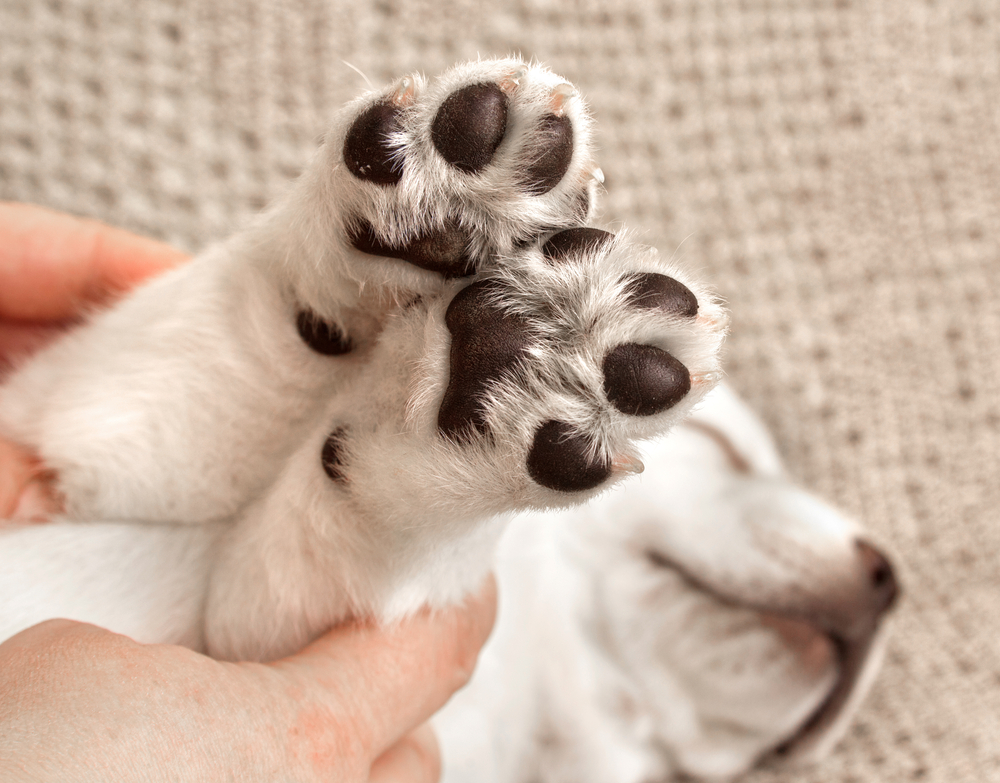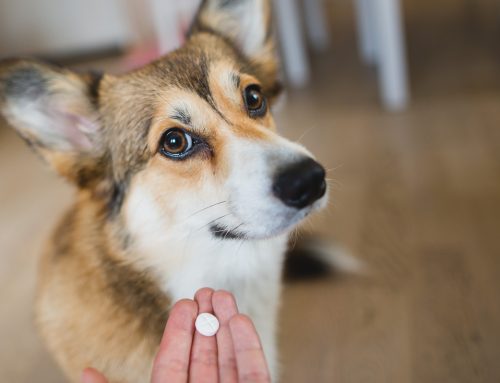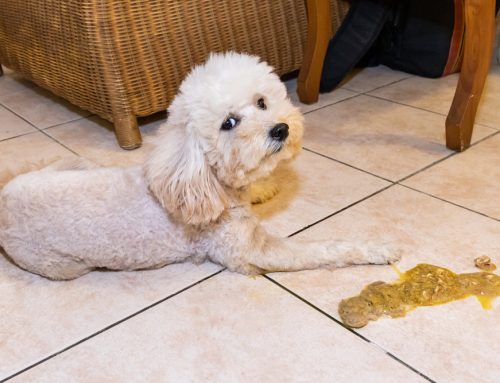Getting a puppy during the COVID-19 quarantine seems like a brilliant idea. You have more time at home to devote to training, ample opportunity to create a deep bond, and puppy kisses will lift your mood, which is vital during such worrying times. But, one key puppy-training point is missing—how do you socialize a puppy while practicing social distancing during a pandemic?
Socialization is a crucial part of a puppy’s development, and shapes their entire world viewpoint. Without proper socialization, and positive exposure to new people, places, and animals, your dog, as an adult, may be anxiety-ridden and less likely to cope in novel situations. Exposing your new puppy to as many new items and living creatures as possible during the 3- to 14-week socialization period will make your furry best friend a wonderful, happy, well-adjusted companion for years to come. To socialize your new puppy while social distancing, follow these tips:
#1: Wear various perfumes and lotions for your puppy to smell
A dog’s sense of smell is much greater than yours, and they learn an impressive amount of information about the world simply through a good sniff. Expose your new puppy to a variety of perfumes, colognes, and lotions, to prepare them for meeting people with different smells.
#2: Introduce your puppy to unfamiliar objects in your home
Your home contains many scary items for your pup—the vacuum cleaner, garbage disposal, hair dryer, and other objects that make loud noises will likely send your puppy scrambling for safety. To accustom your pet to everyday noisy items, reward your puppy for sniffing the vacuum or hair dryer when turned off. Acclimate your pup to the noise by having a family member sit in another room with your pet, giving them treats for calm behavior, when you turn on the item. As your puppy relaxes, move the item closer, as long as your pup remains at ease. With enough treats, and a slow introduction, you’ll soon be able to vacuum while your pup naps.
#3: Walk your puppy over novel textures and surfaces
At home, your puppy may be familiar with carpet, hardwood, tile, and grass, but they’ll likely encounter many other textures while exploring outside. As you walk your pup around your neighborhood, search for different textures, such as asphalt, cement, sand, mulch, and grates. Never drag your puppy over unfamiliar surfaces, but allow them to make the choice, and reward with a tasty treat.
#4: Schedule a puppy play date with a supervisor
Puppies need interaction with other puppies or tolerant dogs, to learn appropriate canine behavior. While this may be difficult if you don’t have an older dog at home, you can still introduce your pup to other dogs—seek out a neighbor or friend with a puppy, and let the two romp together with one person supervising. That will be much more enjoyable than sitting in a crowded puppy class—which has been canceled, anyway.
#5: Walk your puppy on a six-foot leash around new people
An excellent way to maintain the proper social distance of six feet is using a leash that length for your puppy’s walks. Puppies are irresistable, so it will be difficult to maintain a six-foot distance when out and about. Stand at the end of the leash as you allow your puppy to greet strangers, who must not force any interaction. Reward your pup for calm, confident behavior around new people, and work on focusing behaviors, such as “watch me,” “sit,” and “stay,” if your puppy becomes overly excited.
#6: Have all your household members take turns caring for your puppy
It’s easy for your pup to fall into a routine of relying on one caretaker, but acclimate them to change by rotating care tasks. Change who walks, feeds, grooms, and trains the puppy each day, to accustom your pooch to being handled by different people.
#7: Train your puppy to be content when alone
If you never leave your puppy alone while in quarantine, you will be setting them up for separation anxiety when the world resumes normal activity. Use crate- or mat-training to teach your pup to be content and independent in another room, while you take a shower, fold laundry, or cook dinner. Give your puppy a long-lasting food puzzle while in their crate or resting area as a reward for being alone, and also as a distraction.
#8: Watch your puppy’s reaction to home noises and play videos of outdoor noises
Your home can be a noisy place—gunfights and explosions on TV, phones and doorbells ringing, and electronic toys making high-pitched or scary sounds. Slowly introduce your pup to a range of noises, inside and outside your home, by keeping volumes low during the first few weeks. Construction, traffic, and thunderstorms are common noise phobia triggers, so play these recorded sounds quietly, rewarding your puppy for calm behavior, as you increase the volume.
#9: Use wheeled objects around your puppy
When walking around the neighborhood, your pup may notice bikes, skateboards, and roller skates whizzing by, which can be frightening. Teach your puppy not to panic by viewing wheeled objects from a slowly decreasing distance, rewarding all the while.
#10: Acclimate your puppy to grooming tasks

Teaching your puppy to accept nail trims, baths, and ear cleanings will stand them in good stead for the rest of their life. Many pets struggle with these grooming tasks, but proper training when young can make a world of difference. Go slowly, and pair each step with a tasty treat. Puppies especially enjoy peanut butter smeared on the wall during bathtime, or stuffed in a Kong for a nail trim.
If you’ve welcomed a new puppy into your home, we’d also like to welcome them into our Country Valley Veterinary Clinic family. Call us to schedule your puppy’s first wellness visit, to get them started off on the right paw.







Leave A Comment